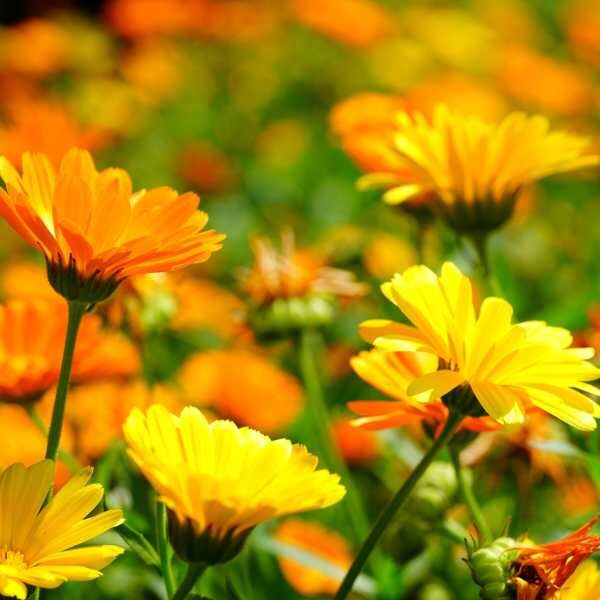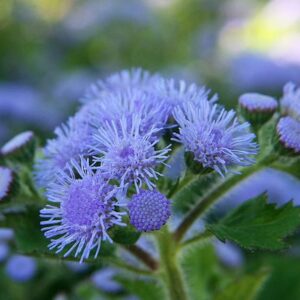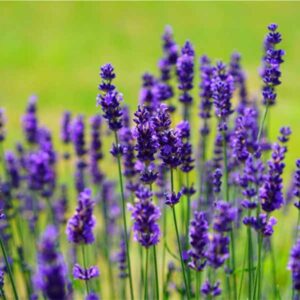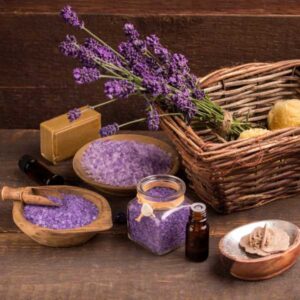Calendula Pacific Beauty
$4.49
Calendula Officinalis
- Seed Count 125
- Easy To Grow
- Annual
- Height 60 cm
In stock
Description
Calendula Pacific Beauty has large flowers in a mix of warm colours including orange, yellow and apricot. Calendula are considered by many gardening experts as one of the most versatile flowers to grow in a garden, especially since they are easy to grow, and tolerate most soils. Like most hardy annuals, they can be simply sown where they are to flower. They are tolerant of any well-drained soil, even quite poor ones.
Cheerful and bright, use Calendula alone or in combination with other flowering annuals and perennials in beds, borders or containers. Calendula are prolific and durable and so are perfect candidates for cutting and flower arrangements.
A common name for the calendula is ‘Pot Marigold’ because the outer petals of the flower are used in cooking as both flavouring and colouring agent in soups, stews, cheeses, and margarine. The tangy petals can be sprinkled into salads and used to decorate cakes or feed them to chickens to produce dark coloured yolks. The petals can also be used as a substitute for saffron.
The plants are also an excellent companion plant because of their insect repelling properties. They were once used as a herbal remedy in broths “as a comforter of the heart and spirits” and the flowers are also used in skin and cosmetic preparations due to its soothing properties.
| Method: Sow direct or seedlings | Soil Temp: 10°C - 30°C |
| Cool Mountain: Sep - Mar | Germination: 7 - 14 days |
| Arid: Jan - Dec | Position: Part shade |
| Temperate: Sep - May | Row Spacing: 50cm apart |
| Sub Tropical: Jan - Dec | Planting Depth: 5 mm |
| Tropical: Apr - Jul | Harvest: 75 days |
Climate and Seasonal Considerations
- Calendula can be grown in all parts of Australia.
- It thrives in best temperatures between 15°C and 20°C but can tolerate warmer temperatures if adequately watered.
Soil Requirements
- Calendula prefers well-draining soil with moderate fertility.
- It tolerates a wide range of soil types, including sandy, loamy, and clay soils, but performs best in slightly acidic to neutral pH (6.0–7.0).
- Amend heavy clay soils with compost or organic matter to improve drainage.
Planting
Seed Starting
- Sow seeds directly into the garden or start them indoors 4–6 weeks before the last frost date. Seeds germinate in 7–14 days at 10–30°C.
Spacing
- Plant seeds or seedlings 50 cm apart to allow for adequate air circulation.
Depth
- Sow seeds 5 mm deep and cover lightly with soil.
Transplanting
- If starting indoors, transplant seedlings outdoors after the risk of frost has passed and they have developed 2–3 true leaves.
Sunlight and Watering
Sunlight
- Calendula prefers full sun but can tolerate partial shade, especially in hotter regions.
- In areas with intense summer heat, provide afternoon shade to prevent wilting.
Watering
- Water regularly to keep the soil moist but not waterlogged.
- Once established, calendula is somewhat drought-tolerant.
- Avoid overhead watering to reduce the risk of fungal diseases.
Fertilising
- Calendula is not a heavy feeder.
- A light application of compost or a balanced organic fertiliser at planting time is sufficient.
- Over-fertilising can lead to excessive foliage growth at the expense of flowers.
Maintenance
Deadheading
- Remove spent flowers regularly to encourage continuous blooming and prevent self-seeding (if desired).
Mulching
- Apply a layer of mulch around plants to retain soil moisture, suppress weeds, and regulate soil temperature.
Pests and Diseases
- Calendula is relatively pest-resistant but may attract aphids, whiteflies, or spider mites.
- Use insecticidal soap or neem oil to manage infestations.
- Prevent powdery mildew by ensuring good air circulation and avoiding overhead watering.
Harvesting
- Harvest flowers when they are fully open, preferably in the morning after the dew has dried.
- Use fresh petals in salads or dry them for teas, salves, or culinary uses.
- Regular harvesting promotes more blooms.
Companion Planting with Calendula
Benefits of Calendula in Companion Planting
- Pest Repellent: Calendula’s strong scent deters pests such as aphids, whiteflies, and nematodes.
- Attracts Beneficial Insects: The bright flowers attract pollinators and beneficial insects that prey on garden pests.
- Soil Health: Calendula’s roots help improve soil structure and suppress weeds.
- Aesthetic Appeal: Its vibrant blooms add colour and beauty to the garden.
Best Companion Plants for Calendula
- Tomatoes: Calendula repels tomato hornworms and other pests.
- Carrots: Calendula deters carrot flies and improves carrot growth.
- Lettuce and Leafy Greens: Calendula’s pest-repellent properties protect these crops.
- Beans and Peas: Calendula attracts pollinators, which can improve yields.
- Herbs: Calendula complements herbs by deterring pests and adding visual appeal.
- Brassicas: Calendula helps repel pests like cabbage moths.
Plants to Avoid
- Avoid planting calendula near fennel or dill, as these plants can inhibit its growth.
How to Use Calendula in Companion Planting
- Interplanting: Scatter calendula plants throughout the garden to maximize their pest-repellent and pollinator-attracting benefits.
- Border Planting: Plant calendula around the edges of garden beds to create a protective barrier.
- Trap Cropping: Use calendula as a trap crop to attract pests away from more valuable plants.
Additional Tips for Growing Calendula
Hot and Dry Regions:
- In areas with intense summer heat, grow calendula in partial shade and mulch heavily to retain soil moisture. Water deeply but infrequently to encourage deep root growth.
Humid Regions:
- Ensure good air circulation and avoid overhead watering to prevent fungal diseases like powdery mildew.
Container Growing:
- Calendula grows well in pots. Use a well-draining potting mix and ensure the container has drainage holes. Place the pot in a sunny location and water regularly.
Self-Seeding:
- Allow some flowers to go to seed if you want calendula to return the following year.
- Thin seedlings as needed to prevent overcrowding.
Troubleshooting Common Issues
Pests
- Aphids and Whiteflies: Spray with insecticidal soap or neem oil.
- Spider Mites: Increase humidity and spray plants with water to dislodge mites.
Diseases
- Powdery Mildew: Improve air circulation, avoid overhead watering, and apply a fungicide if necessary.
- Root Rot: Ensure well-draining soil and avoid overwatering.
Poor Flowering
- Causes: Over-fertilizing, insufficient sunlight, or overcrowding.
- Solutions: Reduce fertilizer, provide more sunlight, and thin plants as needed.













Reviews
There are no reviews yet